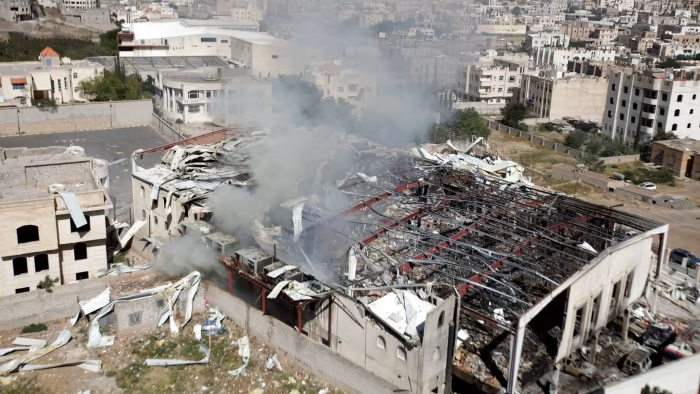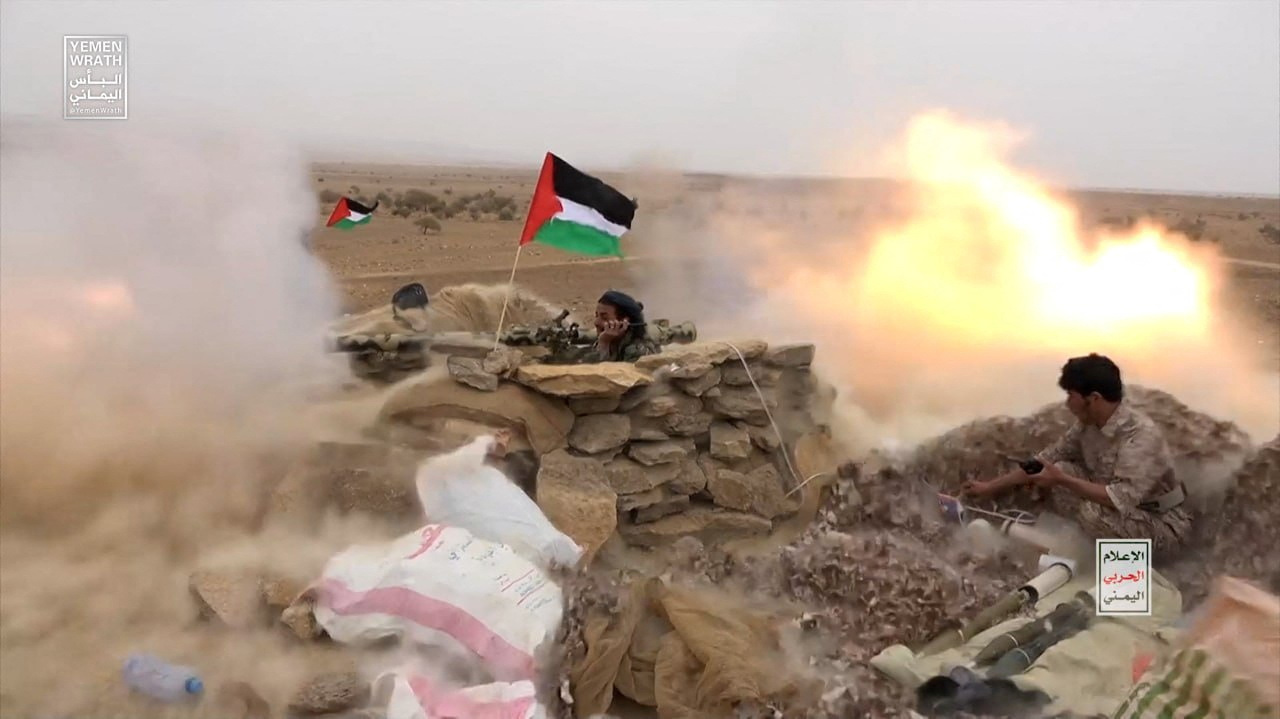A New Chapter in Yemen’s Conflict
In a dramatic escalation of the ongoing conflict, Saudi Arabia has launched a full-scale military offensive on Yemen’s capital, Sanaa. This aggressive move marks a significant shift in the regional power dynamics and has profound implications for the Middle East. The Saudi-led coalition, backed by the United States and Israel, is intensifying its efforts to counter the Houthi rebels, who have been a formidable force in Yemen since their rise to power.
The offensive has seen relentless airstrikes and artillery bombardments targeting key Houthi strongholds in Sanaa. Civilian areas have been severely affected, with reports of widespread destruction and numerous casualties. The international community watches closely as this new phase of the war unfolds, raising concerns about the humanitarian crisis and the potential for further regional instability.
The Houthis: Resilient and Defiant
The Houthi movement, also known as Ansar Allah, has demonstrated remarkable resilience in the face of mounting pressure. Despite the overwhelming military might of the Saudi-led coalition, the Houthis have managed to hold their ground and continue their resistance. Their stronghold in Sanaa remains a symbol of their defiance and commitment to their cause.
In recent months, the Houthis have expanded their operations beyond Yemen’s borders, launching attacks on Israeli targets and threatening international shipping routes in the Red Sea. These actions have drawn the ire of Israel and have led to retaliatory strikes, further complicating the regional security landscape.
The Houthis’ ability to sustain their military campaign, despite limited resources and facing multiple adversaries, underscores their determination and strategic acumen. Their alliance with Iran has provided them with critical support, including military training and supplies, which has been instrumental in their prolonged resistance.

Saudi Arabia’s Strategic Objectives
For Saudi Arabia, the offensive in Yemen is driven by a combination of strategic, political, and ideological objectives. The kingdom views the Houthis as an Iranian proxy and a direct threat to its influence in the region. By launching this full-scale attack, Saudi Arabia aims to weaken the Houthi movement and restore its preferred government in Yemen.
The Saudi-led coalition’s military campaign has been characterized by airstrikes, naval blockades, and ground operations. These efforts are designed to disrupt the Houthis’ supply lines, degrade their military capabilities, and force them into negotiations. However, the humanitarian toll of these operations has been significant, with thousands of civilians affected by the ongoing conflict.
Saudi Arabia’s involvement in Yemen is also influenced by its broader regional rivalry with Iran. The conflict in Yemen is seen as part of the larger struggle for influence in the Middle East, with both countries vying for dominance in the Arabian Peninsula and beyond.
The Role of the United States and Israel
The United States has been a steadfast ally of Saudi Arabia, providing logistical support, intelligence sharing, and military assistance. This partnership has been crucial in enabling the Saudi-led coalition to conduct sustained operations against the Houthis. However, the U.S. involvement has been met with criticism from various quarters, including human rights organizations and members of Congress, who have raised concerns about the humanitarian impact of the conflict.
Israel’s role in the conflict has been more indirect but equally significant. While not formally part of the Saudi-led coalition, Israel has conducted airstrikes against Houthi targets in Yemen, particularly in retaliation for Houthi attacks on Israeli-linked vessels and interests. These strikes have further complicated the situation, drawing the Houthis into a broader regional confrontation.
The alignment of the United States and Israel with Saudi Arabia in this conflict reflects a shared interest in countering Iranian influence in the region. However, the involvement of these external powers has also internationalized the conflict, making a resolution more challenging.

Humanitarian Crisis and International Response
The escalation of the conflict has exacerbated Yemen’s already dire humanitarian situation. The United Nations has described Yemen as the world’s worst humanitarian crisis, with millions of people in need of aid. The latest offensive has led to an increase in civilian casualties, displacement, and destruction of infrastructure.
International organizations and human rights groups have called for an immediate ceasefire and the protection of civilians. However, diplomatic efforts to bring about a halt to hostilities have so far been unsuccessful. The competing interests of regional and international powers have hindered meaningful negotiations.
The humanitarian crisis in Yemen has also had regional implications, with neighboring countries expressing concern about the spillover effects of the conflict, including refugee flows and security threats.
Prospects for Peace
As the conflict enters a new and more intense phase, the prospects for peace appear increasingly remote. The entrenched positions of the warring parties, coupled with the involvement of external powers, make a negotiated settlement challenging.
However, there are glimmers of hope. Diplomatic initiatives, though limited, continue to be pursued by various actors, including the United Nations and regional organizations. These efforts aim to facilitate dialogue between the conflicting parties and address the underlying issues fueling the conflict.
For peace to be achievable, it will require a concerted effort from all stakeholders to prioritize the welfare of the Yemeni people and work towards a political solution that respects Yemen’s sovereignty and addresses the legitimate concerns of all parties involved.
Conclusion
The full-scale war launched by Saudi Arabia in Yemen marks a critical juncture in the region’s history. It is a conflict that intertwines local grievances with broader geopolitical rivalries, involving multiple actors with competing interests.
As the situation unfolds, the international community must remain vigilant and committed to finding a peaceful resolution. The people of Yemen have endured immense suffering, and it is imperative that efforts are made to end the violence and pave the way for a stable and prosperous future.
The coming weeks and months will be pivotal in determining the trajectory of the conflict and the prospects for peace in Yemen. The actions taken now will have lasting implications for the region and the world.
Do follow Gulf Magazine on Instagram.
Also Read – Discover Saudi Arabia’s Most Exciting Pilates Hotspots Today



